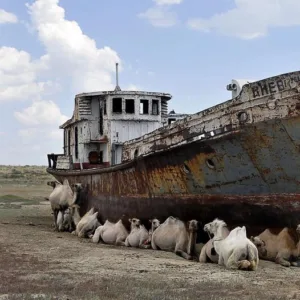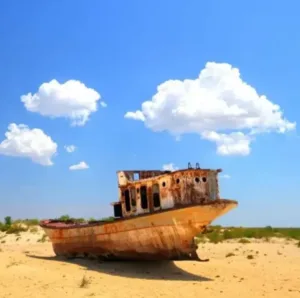The Aral Sea, once the fourth-largest inland water body spanning 26,000 square miles in Central Asia, is now a fraction of its former glory, nestled between Kazakhstan and Uzbekistan. This environmental tragedy is explored in “The Desert of Ghost Ships.”

Historical figures like Alexander the Great marveled at its vastness. Yet, human activity, particularly Soviet irrigation projects in the 1960s diverting the sea’s feeding rivers for cotton and rice crops, triggered a rapid decline. By the 1980s, the sea had lost half its volume, decimating fishing villages and leaving rusted ships and crumbling infrastructure in its wake.
Once a symbol of life, it earned the ominous nickname “Desert of Ghost Ships.” The consequences extended beyond humans, affecting the environment with salty, insecticide-laden dust, leading to health problems such as cancer and respiratory illnesses.

Efforts to restore the Aral Sea have seen limited success, with a dam on the Kazakh side raising water levels slightly in recent years. However, the southern part remains lifeless. This tragic tale serves as a stark reminder of the lasting damage human actions can inflict on the environment, urging us to act responsibly in our delicate world.




Leave a Reply